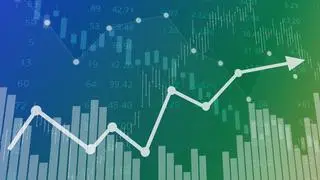In recent months, prices of industrial metals have been under intense downward pressure, primarily on fears of heightened protectionism as many believe; but there is more to it. Without doubt, metals have been at the forefront of the trade spats. It all started with tariffs on imported steel and aluminium imposed by the US, followed by retaliatory action. However, currency (a stronger dollar) has surely played a part, while the China factor, too (anticipated slowdown in the second half of the year), has had a significant impact on the prices of most base metals.
This has naturally resulted in negative investor sentiment, which — as is its wont — has exacerbated the price action. Copper, for instance, has lost almost 7 per cent in value over the last one month, having fallen to $6,150 a tonne on August 6 from around $6,500-a-tonne level a month earlier. Aluminium is no exception. Early August price of $2,105 a tonne means a 5 per cent decline from levels a month earlier. Interestingly, the fall in metals prices is despite the ongoing healthy global growth expansion. Led by the US, the engine of global growth, the world economy should grow about 3.5 per cent in 2018, experts believe, while the possibility of Chinese economy slowing would act as headwind.
More bad news
Given that trade tensions, especially between the US and China, two of the world’s largest economies, continue to escalate with tariffs and counter measures, the metals market is likely to come under even more intense pressure in the months ahead.
The US duties have been largely directed at the Chinese electronics and automobile industries. It is common knowledge that the two sectors are metals-intensive — they are large end-users of a variety of metals — and therefore demand can potentially take a hit.
So, what’s the outlook from here on? There is risk of a further price fall. For one, anticipated Chinese slowdown for reasons both domestic (decelerating credit availability) and external (tariff on Chinese metals products) is sure to reduce demand for a variety of metals. Fixed-asset investment has slumped, while construction activity is cooling. In other words, demand prospects for metals such as steel, copper and zinc have deteriorated.
The currency factor will continue to operate. If anything, the dollar has benefited from the ongoing trade problems.
Strong dollar
The US dollar is expected to remain strong. This is because the US economy is performing well and the US Federal Reserve is most likely to announce two rate hikes in the second half of the year. The greenback is expected to remain strong until 2019. The inverse relationship between dollar and metals is well known. A stronger dollar caps the upside for the commodities traded in dollar terms.
There is also the view that the ongoing trade tensions have the propensity to escalate further, rather than reduce. In the event, the metals market faces the risk of having to take bigger hits on the demand side than before. This will weigh on prices.
Who has the upper hand in the trade spat between the US and China is as yet unclear. The Chinese seem to be bent on not succumbing to the US pressure. China has identified a long list of over 5,000 US products that can potentially attract import tariffs. In other words, the world may witness a protracted trade war.
Copper is one metal whose prices have fallen sharply; but the ongoing wage negotiations with mine workers in Chile, a significant supplier of the metal (27 per cent mining production share), are being keenly watched. If the talks fail, there could be production outages with consequent impact on prices. However, this could be tempered by concerns over the health of the Chinese economy and growing refined output.
The author is a policy commentator and commodities market specialist.







Comments
Comments have to be in English, and in full sentences. They cannot be abusive or personal. Please abide by our community guidelines for posting your comments.
We have migrated to a new commenting platform. If you are already a registered user of TheHindu Businessline and logged in, you may continue to engage with our articles. If you do not have an account please register and login to post comments. Users can access their older comments by logging into their accounts on Vuukle.